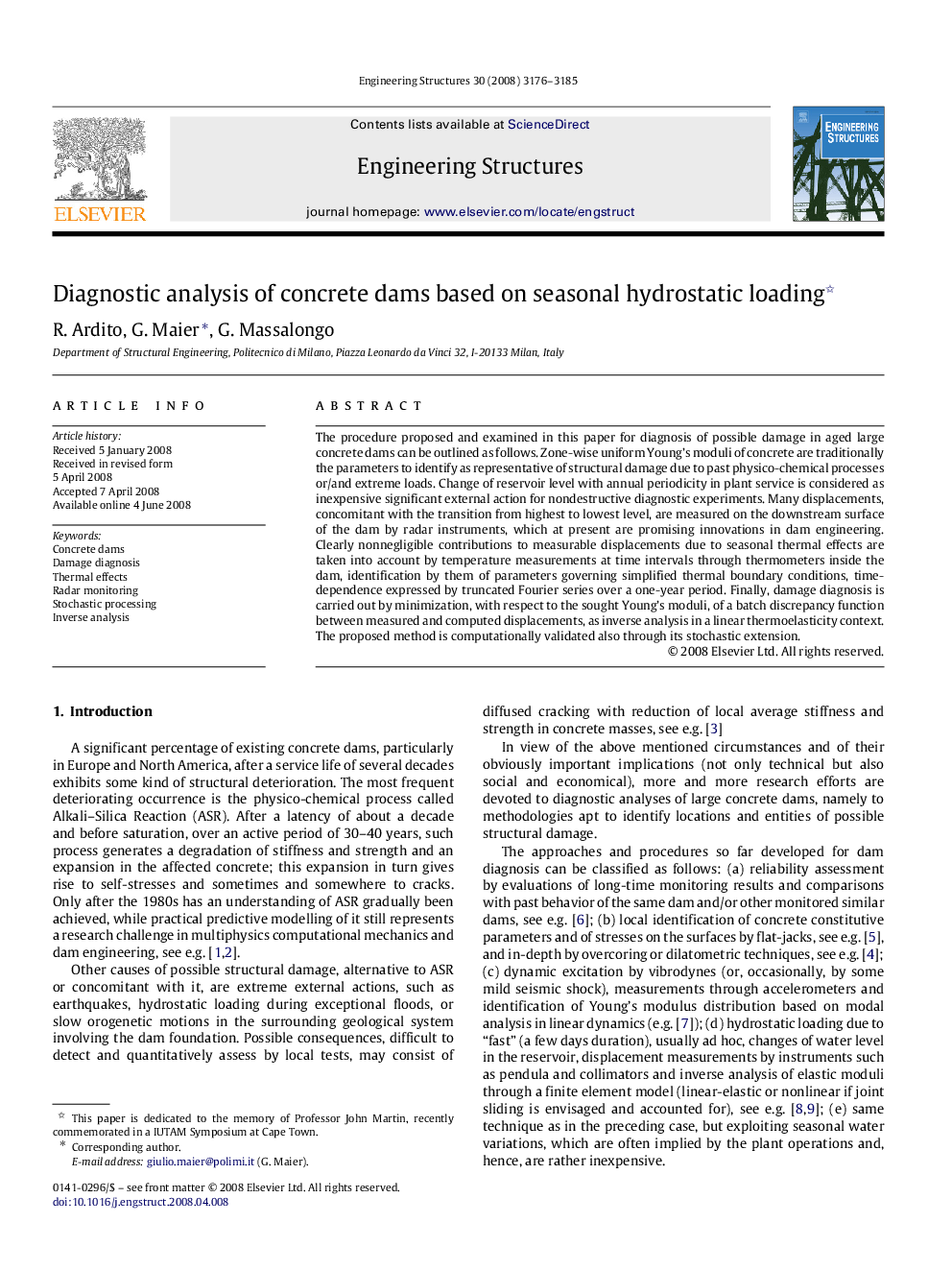| Article ID | Journal | Published Year | Pages | File Type |
|---|---|---|---|---|
| 268791 | Engineering Structures | 2008 | 10 Pages |
The procedure proposed and examined in this paper for diagnosis of possible damage in aged large concrete dams can be outlined as follows. Zone-wise uniform Young’s moduli of concrete are traditionally the parameters to identify as representative of structural damage due to past physico-chemical processes or/and extreme loads. Change of reservoir level with annual periodicity in plant service is considered as inexpensive significant external action for nondestructive diagnostic experiments. Many displacements, concomitant with the transition from highest to lowest level, are measured on the downstream surface of the dam by radar instruments, which at present are promising innovations in dam engineering. Clearly nonnegligible contributions to measurable displacements due to seasonal thermal effects are taken into account by temperature measurements at time intervals through thermometers inside the dam, identification by them of parameters governing simplified thermal boundary conditions, time-dependence expressed by truncated Fourier series over a one-year period. Finally, damage diagnosis is carried out by minimization, with respect to the sought Young’s moduli, of a batch discrepancy function between measured and computed displacements, as inverse analysis in a linear thermoelasticity context. The proposed method is computationally validated also through its stochastic extension.
